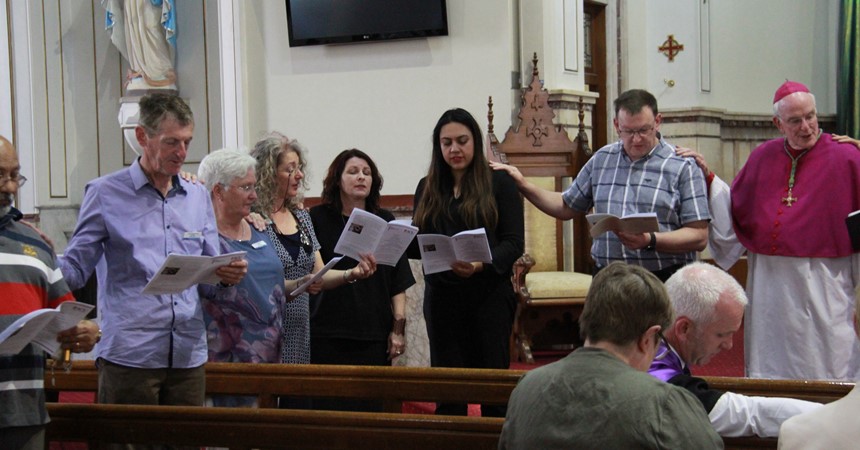We made a new friend last year when Nick Wagner spent time with us in October. We are hoping he and Diana Macalintal will return in August. Nick has written an engaging series of reflections on full, conscious and active participation in liturgy as the empowerment of our baptismal life. We will focus on these reflections during the first half of Lent. They are worthy of our deep consideration. Some of his images are American but I am sure we can translate them as we listen for the kernel of wisdom contained therein. And so let us begin.
Moving from technique to artistry: Three levels of liturgical participation by Nick Wagner
Our liturgical ministry changes the world. We change the world by changing hearts. We change hearts by celebrating liturgy so authentically that it reveals the very nature of God and God’s love for us.
This all happens when we participate, fully and consciously in the liturgy—especially Eucharist. The bishops at the Second Vatican Council said:
Mother Church earnestly desires that all the faithful should be led to that fully conscious, and active participation in liturgical celebrations which is demanded by the very nature of the liturgy. (Constitution on the Sacred Liturgy, 14)
But how, exactly, does our participation change hearts? What is it, exactly, that is “demanded by the very nature of the liturgy”?
The liturgy demands participation
The liturgy has a nature that is more like a Thanksgiving dinner than a movie about Thanksgiving. If I pull up a Netflix romcom about a funny, lovely Thanksgiving celebration, I’m just watching a show. But if I go to my family Thanksgiving dinner, even if I sit in the corner most of the time and don’t talk much, I am still at least somewhat engaged. The nature of a Thanksgiving dinner demands that I participate in a way that the nature of a movie does not.
Like a Thanksgiving dinner, the liturgy has three levels of participation. The first level is what we actually do. The liturgy is a performance, and all of us have a role (even if we sit in the last pew and never open the hymnal). No one is only a spectator.
The second level of participation is what gets accomplished. In a wedding liturgy for example, people get married. That actually happens. We all perform our liturgical role, and that performance has an effect.
The third level of participation is less talked about and less recognized. But it is the most important. It is the “why” behind everything we do. Why do we perform a wedding ritual? Why do these two people get married in the church? Or why do we celebrate Sunday Mass? Why do we share in the Body and Blood of Christ?
The “why” is the change-the-world part. This third level of participation is to participate in the very life of God. The celebration of the liturgy and the effects of the liturgy open us up to the gob smacking, astonishing, overflowing love of God that fills us and changes us forever.
Our liturgical leadership changes the world
As liturgical ministers, we have to at least understand and be good at facilitating the first level of participation. We have to assist and enable the liturgical celebration in such a way that everyone’s role is acknowledged and maximized. We have to make liturgy work for both the person in the back row and the ministers in the sanctuary.
This is a difficult task, but it is not scaling-a-mountain difficult. People with a little bit of talent and an attention to detail can do this kind of work. However, mastering the next two levels of participation moves us from liturgical coordinators to liturgical artists.
Moving to artistry is a process. We have to master the basics first. We have to become technically proficient before we can approach artistry. In a future post, we’ll look at four characteristics that every liturgy must have to reach the first level of participation.
This article is based on Mark Searle’s book, Called to Participate: Theological, Ritual, and Social Perspectives, 15-18.
Source: Liturgy.Life All right reserved. Used with permission.
Back to Maitland-Newcastle
What have you become aware of about your participation in the liturgy from Nick’s reflections? If we are going to participate with God in changing the world we first have to allow God to change us.
Living our baptism day in and day out is demanding stuff. I need to ensure that I am immersed in the very life of God. Such a deep sharing in God’s life is the fruit of our full, conscious and active participation in the liturgy. In next week’s Liturgy Matters, Nick will reflect further on the basics of participation – the first level.

